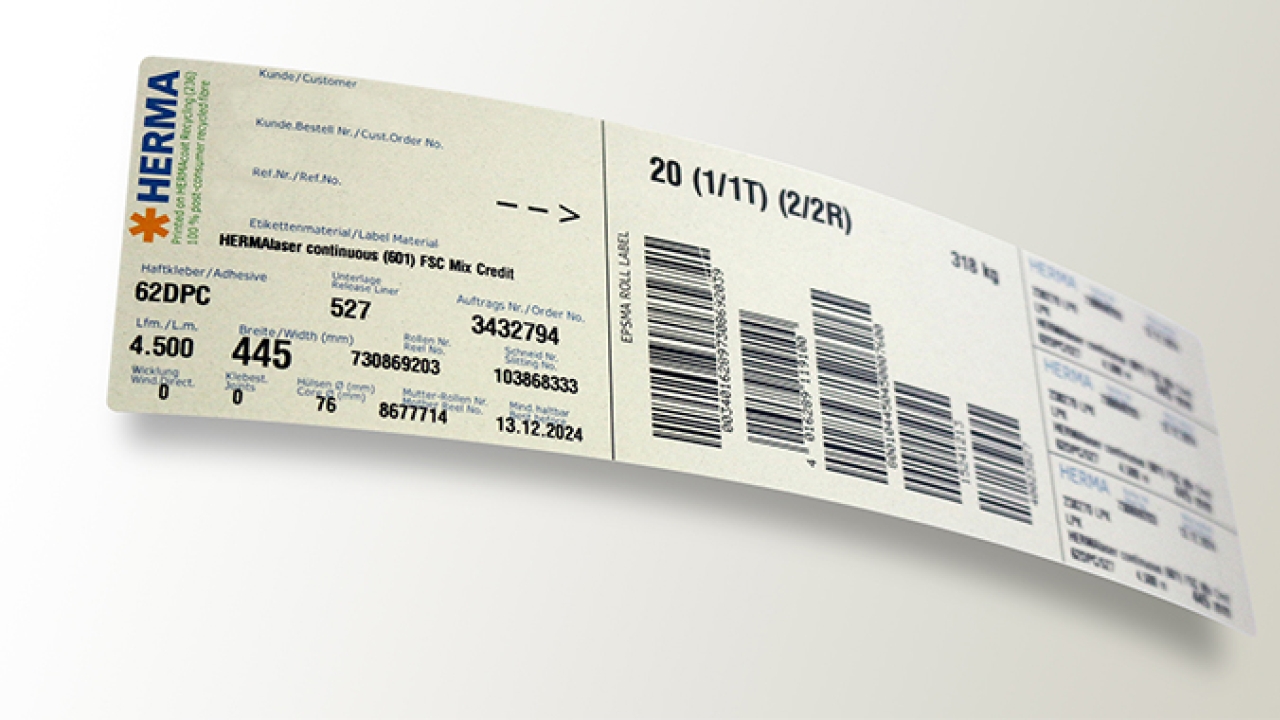Herma switches to HermaCoat PCR labels
German self-adhesive technology specialist Herma has switched its label material used to ship material rolls worldwide to HermaCoat. This more sustainable option is made entirely from post-consumer recycled (PCR) fibers.

Herma has conducted a successful large-scale trial on its own behalf and changed the self-adhesive material in its standardized shipping labels for self-adhesive material rolls. The company produces more than one million of these so-called EPSMA roll labels each year.
‘In addition to our primary environmental goal of achieving climate neutrality in 2021, we focus our attention at all times on inconspicuous things, always with the intention of making them even more sustainable,’ commented Dr Ulli Nägele, head of development at Herma’s self-adhesive materials division.
The EPSMA roll labels on the adhesive material rolls play an essential role in ensuring a smooth logistics process. This is based on an industry-standard identification system for the automatic detection of self-adhesive roll material. The labels, which are quite large, usually contain several barcodes, for example, with information on the length, width, winding direction, and the number of splices on a roll, as well as customer data such as the order number.
All barcodes must be printed in sharp definition to ensure that they remain machine-readable at every step in the supply chain. When shipping goods, the labels are also exposed to fluctuating temperatures and must adhere securely even under demanding climatic conditions. Herma has now proven that these challenges can also be met with labels made from environmentally friendly recycled material, based on its own self-adhesive material.
The HermaCoat Recycling label paper (grade 236), awarded the Blue Angel environmental quality seal, is made entirely from PCR fibers generated from household waste. According to the company, the natural white, slightly glossy coated paper is suitable for labels with multi-color printing and demonstrates excellent printing quality in thermal transfer printing. It is therefore also suited for barcodes containing variable data and high-quality multi-coloring printing, for example, for the pre-printing of company logos or product decoration.
‘For us, this change was only an initial, albeit significant, step as the total amount of material used is considerable,’ added Nägele. ‘Further internal changes are in the pipeline. After all, sometimes it's the little things we need to change to make a big difference.’
Stay up to date
Subscribe to the free Label News newsletter and receive the latest content every week. We'll never share your email address.

